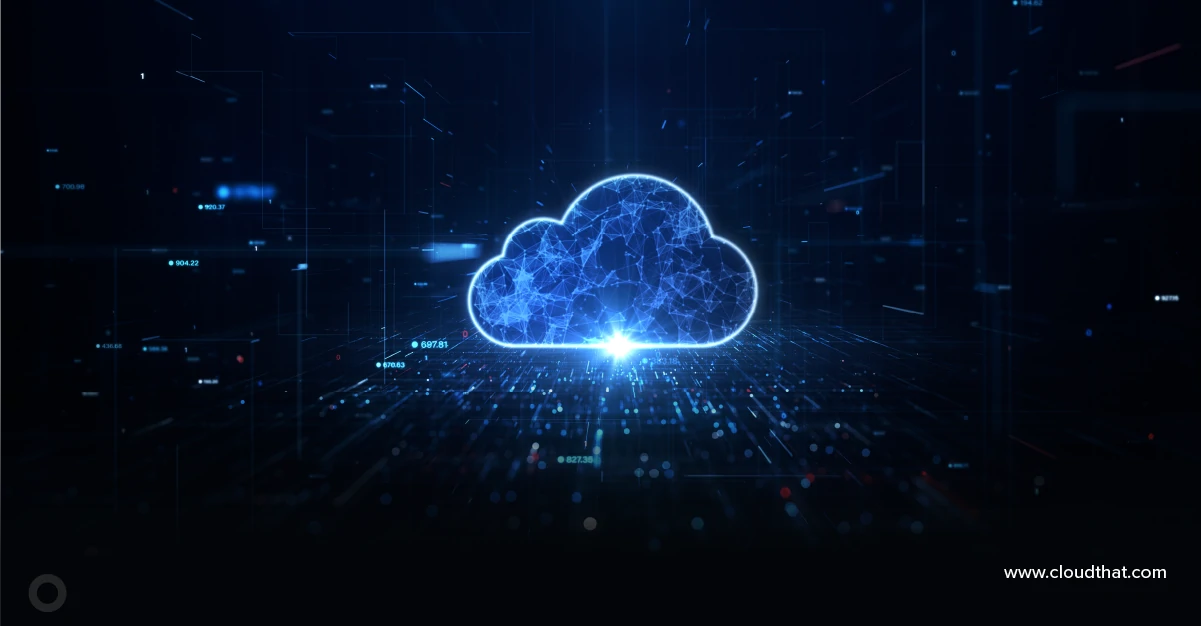|
Voiced by Amazon Polly |
Introduction
Cloud-native apps in 2025 demand more than high availability. They need global consistency, serverless agility, and minimal operational drag. With Amazon Aurora DSQL, AWS’s answer to the pains of scaling transactional data across continents, with zero manual sharding, no clunky failovers, and genuine “pay only for what you use” serverless economics.
While most blogs scratch the surface, let’s do a technical deep dive, unpacking how Amazon Aurora DSQL works, what makes it unique, practical implementation guidance, hard-won lessons, and a peek at what’s coming next.
Pioneers in Cloud Consulting & Migration Services
- Reduced infrastructural costs
- Accelerated application deployment
What Makes Amazon Aurora DSQL “Distributed”?
At its core, Amazon Aurora DSQL combines a distributed SQL execution engine with the proven Aurora storage layer. Here’s what sets it apart:
- Global Transaction Routing
Unlike traditional Aurora clusters that are region-bound, DSQL enables cross-region clusters where any write can be processed locally, with no more single-region bottlenecks. It leverages a global transaction manager that synchronizes states across nodes in multiple AWS regions using a high-speed, low-latency consensus protocol (built on AWS’s proprietary networking).
- Stateless Compute, Stateful Storage
Amazon Aurora DSQL uses a stateless compute fleet that dynamically spins up/down based on real workload, talking to a shared distributed storage layer. This lets you scale compute independently and avoid overprovisioning.
- True Strong Consistency
Aurora DSQL doesn’t sacrifice the “C” in ACID. Every commit is acknowledged only after a distributed consensus across all involved regions, guaranteeing that global apps see the same latest data everywhere. This eliminates the risk of eventual consistency bugs.
- Separation of Control and Data Planes
Management operations (schema changes, scaling, patching) are handled by a global control plane, while SQL data ops are routed by a distributed scheduler, meaning zero-downtime changes and faster upgrades.
Amazon Aurora DSQL Is a Game-Changer
Here are innovations that make Amazon Aurora DSQL stand out:
- Serverless at Distributed Scale: No instance management, warm pools, or pre-allocated nodes. Compute capacity and concurrency scale from zero to thousands automatically.
- Active-Active Multi-Region: Unlike most “global” DBs with an active-passive setup, every region is writable and great for global SaaS, gaming, and fintech.
- Millisecond Latency Guarantees: With high-performance transaction routing and in-memory caching.
- No-Shard Architecture: Application developers never deal with manual sharding logic. All distribution and rebalancing are handled behind the scenes.
Practical Scenarios
Best-Fit Use Cases:
- Real-time global inventory for e-commerce — No lag between EU/US/Asia.
- Multiplayer gaming backends — Instant state sync for users on any continent.
- Financial ledgers or digital wallets — Zero data loss, full audit trails.
- IoT sensor aggregation — Analyse device data from global fleets in one logical view.
Limitations:
- Write Latency: For every commit, consensus is required across participating regions. Your app might see increased latencies if a region’s network is slow. Design with local region reads whenever possible.
- Cost Profile: Serverless doesn’t always mean cheap, high-throughput 24/7 apps may hit a spending ceiling compared to reserved capacity in classic Aurora.
- Advanced SQL Support: Certain advanced extensions or features may lag vanilla Postgres.
Demo Setup Guide
To launch an Amazon Aurora DSQL cluster, use the Amazon Aurora DSQL Console, choose your cluster name, database credentials, and the AWS regions where your application will run. Amazon Aurora DSQL automatically provisions distributed compute and storage across those regions, providing endpoints for read/write access in each.
Zero-Trust Security
- Use AWS IAM authentication (not just passwords).
- Encrypt data with AWS KMS. Amazon Aurora DSQL supports regional and cross-region keys.
- Audit every access with AWS CloudTrail, not just Amazon CloudWatch.
Application Integration
- Connect using PostgreSQL 16-compatible drivers and libraries.
- Store and manage database credentials securely using AWS Secrets Manager.
- For event-driven use cases, integrate Amazon Aurora DSQL with AWS Lambda or Step Functions from your application layer (note: native triggers and streams are not supported).
Performance Engineering
- Leverage Parallel Query: Amazon Aurora DSQL can parallelize analytical queries across nodes and use them for reporting but tune batch sizes for best results.
- Enable Query Result Caching: Cut repeated query latency for dashboards and apps.
- Monitor with Performance Insights: Go beyond standard Amazon RDS metrics for true bottleneck analysis.
- Avoid “Chatty” Patterns: Minimize round-trips between the app and DB; batch writes/reads where possible.
Under-the-Radar Best Practices
- Test Under Failure: Simulate a regional outage (e.g., by blackholing traffic with security groups) and confirm failover time and data consistency in secondary regions.
- Cost Guardrails: Set up automated budget alerts and build Lambda-based policies to throttle workloads if cost thresholds are breached.
- Schema Design: Favor narrow tables and indexing for cross-region transactional workloads, avoid massive blob fields in transactional tables.
Integrating With AWS Services
- Real-Time Streaming: Pipe change data capture (CDC) from Aurora DSQL to Kinesis for analytics or real-time personalization.
- Zero-ETL Analytics: Connect to Amazon Redshift or Amazon QuickSight without exporting data. Amazon Aurora DSQL supports federated queries for live dashboards.
- Serverless Orchestration: Use AWS Step Functions to coordinate multi-region DB ops, Amazon API Gateway for multi-tenant APIs, and AWS Glue for global data pipelines.
Conclusion
Architects can now develop fast, highly available, and easily adaptable global applications, while developers take advantage of PostgreSQL compatibility and extensive AWS integration. Amazon Aurora DSQL allows businesses to quickly deploy global services, simplify operations, and react to changing market conditions with minimal manual intervention. With the addition of features such as AI-driven optimization by AWS, Amazon Aurora DSQL is the go-to option for organizations looking for scalable, future-proof data infrastructure.
Drop a query if you have any questions regarding Amazon Aurora DSQL and we will get back to you quickly.
Empowering organizations to become ‘data driven’ enterprises with our Cloud experts.
- Reduced infrastructure costs
- Timely data-driven decisions
About CloudThat
CloudThat is an award-winning company and the first in India to offer cloud training and consulting services worldwide. As a Microsoft Solutions Partner, AWS Advanced Tier Training Partner, and Google Cloud Platform Partner, CloudThat has empowered over 850,000 professionals through 600+ cloud certifications winning global recognition for its training excellence including 20 MCT Trainers in Microsoft’s Global Top 100 and an impressive 12 awards in the last 8 years. CloudThat specializes in Cloud Migration, Data Platforms, DevOps, IoT, and cutting-edge technologies like Gen AI & AI/ML. It has delivered over 500 consulting projects for 250+ organizations in 30+ countries as it continues to empower professionals and enterprises to thrive in the digital-first world.
FAQs
1. What is the difference between Amazon Aurora DSQL and traditional Amazon Aurora?
ANS: – Amazon Aurora DSQL is made for global use. It automatically syncs your data across many regions, so you don’t have to set up complex replication like with traditional Aurora.
2. Does Amazon Aurora DSQL support both MySQL and PostgreSQL?
ANS: – As of June 2025, Amazon Aurora DSQL is compatible only with PostgreSQL 16. It does not support MySQL compatibility currently. Developers should use PostgreSQL 16 drivers and libraries to connect to Amazon Aurora DSQL clusters.

WRITTEN BY Sujay Adityan
Sujay works as a Research Associate in the Data & AIoT team at CloudThat, with a background in Data Science. He is skilled in data analytics, machine learning, cloud computing, Python programming, and working with large-scale databases and networks. Sujay has contributed to multiple AI/ML and Generative AI projects for both internal teams and clients. Passionate about continuous learning, he aspires to become a proficient software developer, creating meaningful, technology-driven solutions that make a real impact.


 Login
Login


 June 23, 2025
June 23, 2025 PREV
PREV










Comments